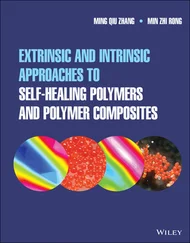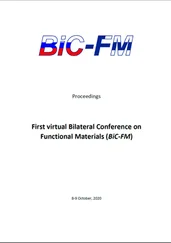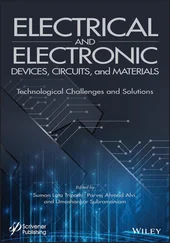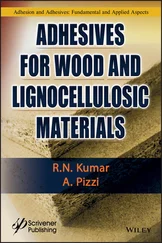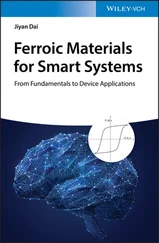516 517
517 518
518 519
519 520
520 521
521 522
522 523
523 524
524 525
525 526
526 527
527 528
528 529
529 531
530 532
531 533
532 534
533 535
534 536
535 537
Scrivener Publishing
100 Cummings Center, Suite 541J Beverly, MA 01915-6106
Publishers at Scrivener
Martin Scrivener ( martin@scrivenerpublishing.com)
Phillip Carmical ( pcarmical@scrivenerpublishing.com)
Self-Healing Smart Materials and Allied Applications
Edited by
Inamuddin, Mohd Imran Ahamed, Rajender Boddula and Tariq Altalhi

This edition first published 2021 by John Wiley & Sons, Inc., 111 River Street, Hoboken, NJ 07030, USA and Scrivener Publishing LLC, 100 Cummings Center, Suite 541J, Beverly, MA 01915, USA © 2021 Scrivener Publishing LLC For more information about Scrivener publications please visit www.scrivenerpublishing.com.
All rights reserved. No part of this publication may be reproduced, stored in a retrieval system, or transmitted, in any form or by any means, electronic, mechanical, photocopying, recording, or otherwise, except as permitted by law. Advice on how to obtain permission to reuse material from this title is available at http://www.wiley.com/go/permissions.
Wiley Global Headquarters
111 River Street, Hoboken, NJ 07030, USA
For details of our global editorial offices, customer services, and more information about Wiley products visit us at www.wiley.com.
Limit of Liability/Disclaimer of Warranty
While the publisher and authors have used their best efforts in preparing this work, they make no representations or warranties with respect to the accuracy or completeness of the contents of this work and specifically disclaim all warranties, including without limitation any implied warranties of merchantability or fitness for a particular purpose. No warranty may be created or extended by sales representatives, written sales materials, or promotional statements for this work. The fact that an organization, website, or product is referred to in this work as a citation and/or potential source of further information does not mean that the publisher and authors endorse the information or services the organization, website, or product may provide or recommendations it may make. This work is sold with the understanding that the publisher is not engaged in rendering professional services. The advice and strategies contained herein may not be suitable for your situation. You should consult with a specialist where appropriate. Neither the publisher nor authors shall be liable for any loss of profit or any other commercial damages, including but not limited to special, incidental, consequential, or other damages. Further, readers should be aware that websites listed in this work may have changed or disappeared between when this work was written and when it is read.
Library of Congress Cataloging-in-Publication Data
ISBN 978-1-119-71015-8
Cover image: Pixabay.Com
Cover design by Russell Richardson
Set in size of 11pt and Minion Pro by Manila Typesetting Company, Makati, Philippines
Printed in the USA
10 9 8 7 6 5 4 3 2 1
There is apprehension about the undesirable material damage caused in devices by breakage, operational fatigue, volume change, abrasion, shape deformation, and cutting eventually formed during practical usage and degradation over time, resulting in deterioration of device properties. This mechanical damage of devices will reduce their reliability and shorten their lifespan. Thus, the development of suitable materials with self-healing, electrical and ionic properties to overcome the damage is very much the need of the hour. Self-healing smart materials (SHSMs) are one of the smart materials that can automatically restore some or all of a devices’ functions after suffering external mechanical damage or harsh environments. In particular, because of their wide-ranging practical applications, SHSMs are having a significant impact in industry due to the self-healing capabilities of the material, which can expand the service life, operational life, longevity, and reliability of the devices; and also reduce waste, thereby conserving resources. The advancement of wearable electronic devices which use self-activating and self-adjusting systems are promising for enhancing operational safety and lifespan. Moreover, the use of SHSMs in manufacturing devices is an excellent choice to re-establish electrical and mechanical properties in case of a mechanical failure. Hence, an understanding about “self-healable technology” and all its related concepts is very essential for modern industries and research communities since these SHSMs and their composites are having a great impact on modern wearable applications in energy and environmental science.
This book describes the design, synthesis, mechanisms, characterization, fundamental properties, functions and development of SHSMs and their composites with their associated applications. It covers cementitious concrete composites, bleeding composites, elastomers, tires, membranes, and composites in energy storage, coatings, shape-memory, aerospace and robotic applications. This book is a result of the commitment of top researchers in the field with various backgrounds and expertise. Its target audience includes materials scientists, polymer industrialists, researchers, members of R&D in wearable electronics; as well as university professors, postgraduate students and academics who are working and studying in the fields of polymers, chemical technology, biology, advanced electronics, polymer engineering, aeronautical engineering. mechanical engineering, biomedicine, advanced sciences, materials sciences, flexible energy storage, and renewable energy. A summary of the information covered in the 21 chapters is given below.
Chapter 1describes the most recent and relevant advances in the development of self-healable polymer coatings, both extrinsic (those using external healing agents) and intrinsic. Implementation of new strategies, like remote activation of the healing process, as well as the perspectives and challenges for these innovative materials, are also discussed.
Chapter 2overviews the current progress on the synthesis of benzoxazine-based materials for self-healing and shape-memory applications. The advantages and drawbacks of these materials are also discussed. Many examples are provided regarding the design flexibility of benzoxazine chemistry and its vast potential in designing smart materials.
Chapter 3introduces the characteristics of self-healing in elastomers and techniques for characterization of healing ability. It also reviews self-healing in particular cases of different elastomer matrices such as natural rubber (NR), styrene butadiene rubber (SBR), polybutadiene rubber (BR), bromobutyl rubber (BIIR), silicones and polyurethane (PU).
Chapter 4discusses various promising strategies for fabricating self-healable rubber as well as methods to improve the self-recovery properties of the rubber. In addition to that, the chapter also focuses on natural rubber modification with self-healing properties, as it has become the most critical component in manufacturing self-healable tires.
Chapter 5outlines the self-healing methods for concrete composites in general, and details about bacterial-aided, self-healing in particular. The different mechanisms of bacterial self-healing and the factors influencing it are discussed. Strategies to enhance the performance of the healing, as well as methods employed for testing are also included.
Читать дальше



